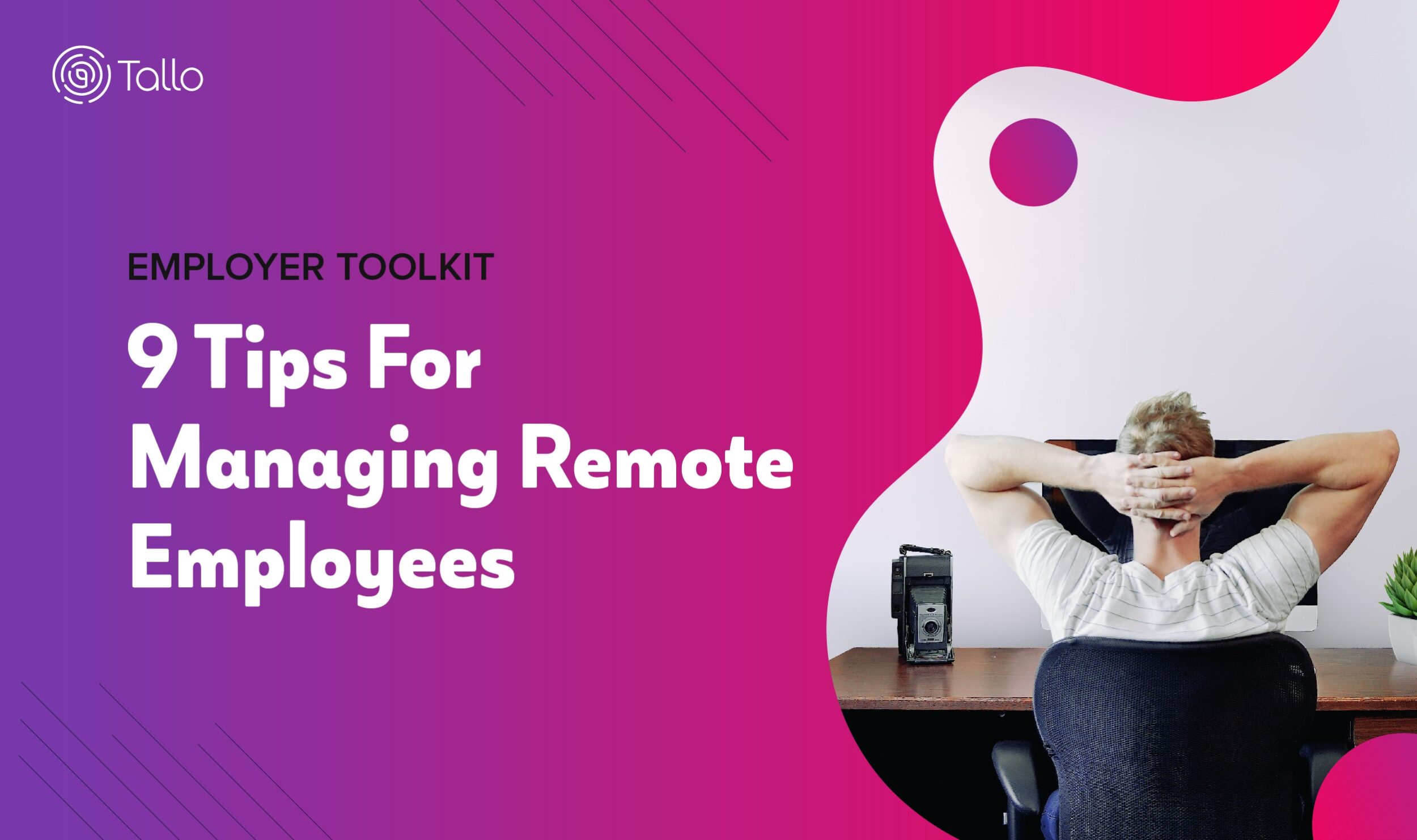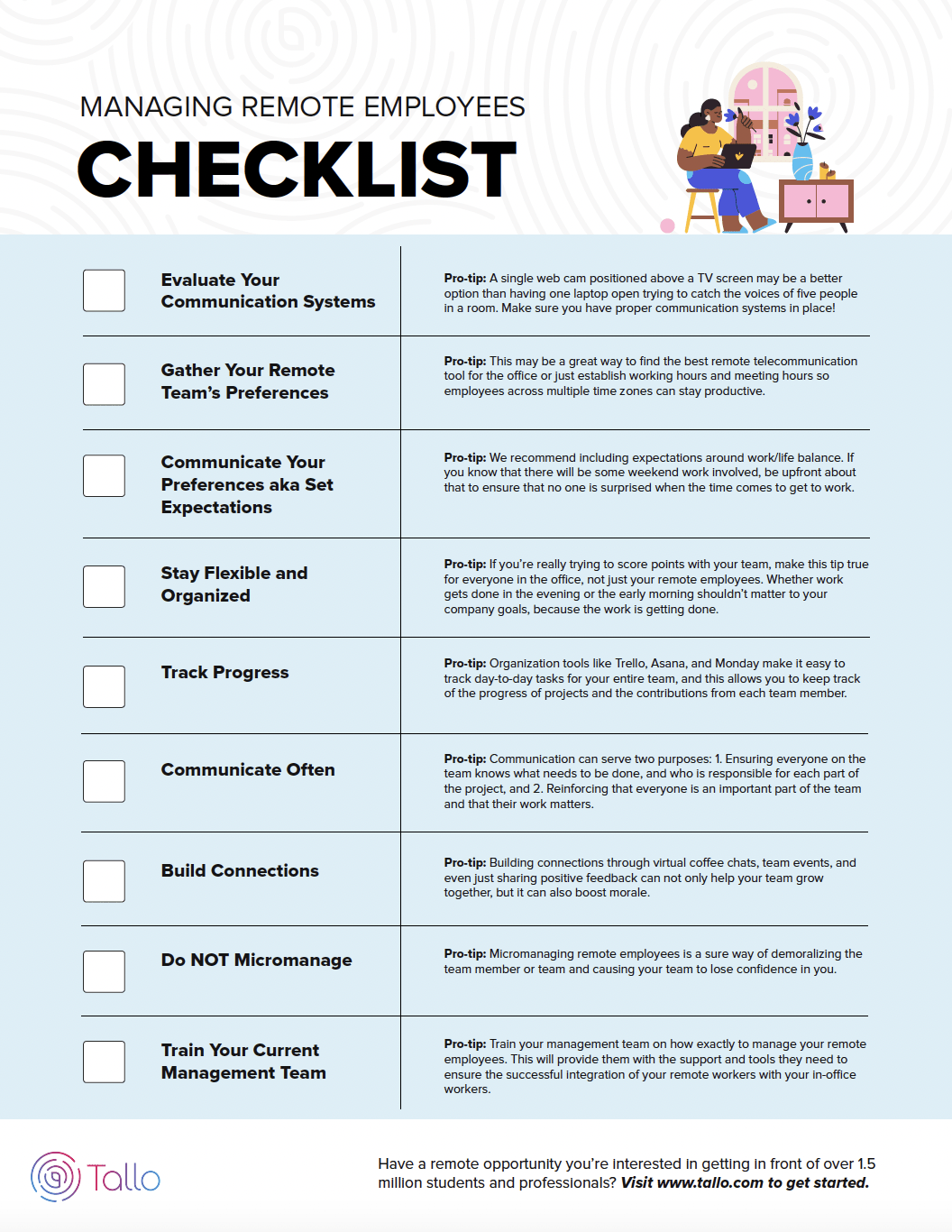
Whether it’s due to learnings from the pandemic, or your company is simply expanding its hiring horizons, you’ve started hiring remote employees. In doing this, you’re taking on a new skillset both for your HR department and for your hiring team. Managing remote employees is different from managing in-office employees, and it may be a skill that your employees need to learn. Knowing the reality of remote employees is new for many businesses, we’ve compiled a list of our top tips to help you manage them.
Tip 1: Evaluate Your Communication Systems
We all use some kind of telecommunication platform like Zoom, Google Meet, or Microsoft Teams, and this works for 1:1 interactions, but what about when half the team is in the office, and the other half is remote? A single web cam positioned above a TV screen may be a better option than having one laptop open trying to catch the voices of five people in a room. These sorts of situations can be frustrating for anyone out of the office, and it can quickly lead to team disconnect and demoralization. Make sure you have proper communication systems in place so that everyone on the team has a seat at the table—whether virtual or not.
Tip 2: Gather Your Remote Team’s Preferences
This may seem like an obvious step to you, but it is one that a lot of companies skip altogether or just forget about. Each team member brings unique perspectives and insights that can be valuable learnings for you. This may be a great way to find the best remote telecommunication tool for the office or just establish working hours and meeting hours so employees across multiple time zones can stay productive. Talking to your remote team about what they need to be successful isn’t just the right thing to do, it’s a necessary thing to do.
Tip 3: Communicate Your Preferences aka Set Expectations
It’s important to give your remote employees (from the start) some boundaries and expectations. This will help guide them when interacting with you and other teams. This can include anything from availability during home-base working hours to goals, milestones, and more. We recommend also including expectations around work/life balance. If you know that there will be some weekend work involved, be upfront about that to ensure that no one is surprised when the time comes to get to work. It also can ensure you have the necessary systems in place to compensate for after-hours productivity, including comp time, extra PTO, gift cards, etc.
Tip 4: Stay Flexible and Organized
We’ve mentioned it a couple of times, and probably will mention it a few more times, but hiring remote means being flexible about work hours. And if you’re really trying to score points with your team, make this tip true for everyone in the office, not just your remote employees. Whether work gets done in the evening or the early morning shouldn’t matter to your company goals, because the work is getting done. So try to stay flexible when it comes to working hours.
The flip side of this coin is to also be organized. This means being aware and on top of what your team is doing, whether they are remote or in-house. This means tracking each team member’s availability and working hours on a calendar or another tool so all team members can see it. This will help everyone stay respectful of when people need to work and when they may be able to meet.
–
Managing remote employees isn’t all that different from managing your in-office employees—you want to have the tools and systems in place that allow them to be successful and help your team hit their goals.
–
Tip 5: Track Progress
Organization tools like Trello, Asana, and Monday make it easy to track day-to-day tasks for your entire team, and this allows you to keep track of the progress of projects and the contributions from each team member. Too many people rely on seeing “butts in the seats” as opposed to real productivity, so make sure you’re looking at the projects and not the actual person, especially when we’re talking about remote workers. Tracking progress also ensures that if there is something that slips through the cracks, you can address it quickly.
Tip 6: Communicate Often
Whether through email, daily stand-ups, or platforms like those mentioned above, make sure you’re communicating and doing it frequently. Your communications serve a two-fold purpose:
- Ensure everyone on the team knows what needs to be done and who is responsible for each part of the project
- Reinforces that everyone is an important part of the team and that their work matters.
And as an added bonus, it can ensure (because videos should always be on when communicating virtually) that remote workers have face time with the team and aren’t just a name on a digital communication. This is an important part of helping you…
Tip 7: Build Connections
It is so easy for remote employees to feel disconnected from the rest of the team, especially if the majority of team members are in the office. Building connections through virtual coffee chats, team events, and even just sharing positive feedback can not only help your team grow together, but it can also boost morale.
–
Making connections with your team members also makes it easier for them to approach you, their manager, to ask questions or share concerns or even just strategize.
–
Tip 8: Do NOT Micromanage
This is a classic mistake companies and managers make when getting new remote workers. They can’t see them in the office, can’t look over their shoulder, so they virtually hover over everything the employee does. This micromanaging technique is a sure way of demoralizing the team member or team and causing your team to lose confidence in you. After all, if you can’t trust them to do their job, why did you hire them? And if they can’t trust you to believe in them, how can they trust you to manage them appropriately?
Tip 9: Train Your Current Management Team
We’ve gone through every detail with a fine-toothed comb, but assuming everyone else on your management team read this article like you did might be a bit of a misstep. That’s why we advocate training your management team on how exactly to manage your remote employees. This will provide them with the support and tools they need to ensure the successful integration of your remote workers with your in-office workers.
Managing remote employees isn’t all that different from managing your in-office employees—you want to have the tools and systems in place that allow them to be successful and help your team hit their goals. Keep that in mind as you’re working with your remote workers, and you’ll be able to easily keep progress on track. To help with that, download this free checklist below.





